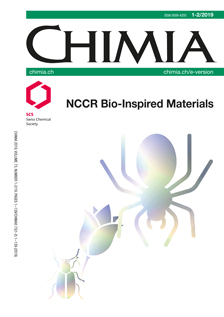An Atomistic Look into Bio-inspired Nanoparticles and their Molecular Interactions with Cells
DOI:
https://doi.org/10.2533/chimia.2019.78PMID:
30814004Keywords:
Cellular membranes, Molecular dynamics, NanoparticleAbstract
Nanoparticles (NPs) have sizes that approach those of pathogens and they can interact with the membranes of eukaryotic cells in an analogous fashion. Typically, NPs are taken up by the cell via the plasma membrane by receptor-mediated processes and subsequently interact with various endomembranes. Unlike pathogens, however, NPs lack the remarkable specificity gained during the evolutionary process and their design and optimization remains an expensive and time-consuming undertaking, especially considering the limited information available on their molecular interactions with cells. In this context, molecular dynamics (MD) simulations have emered as a promising strategy to investigate the mechanistic details of the interaction of NPs with mammalian or viral membranes. In particular, MD simulations have been extensively used to study the uptake process of NPs into the cell, focusing on membrane vesiculation, endocytic routes, or passive permeation processes. While such work is certainly relevant for understanding NP–cell interactions, it remains very difficult to determine the correspondence between generic models and the actual NP. Here, we review how chemically-specific MD simulations can provide rational guidelines towards further bio-inspired NP optimization.
Downloads
Published
Issue
Section
License
Copyright (c) 2019 Swiss Chemical Society

This work is licensed under a Creative Commons Attribution-NonCommercial 4.0 International License.







